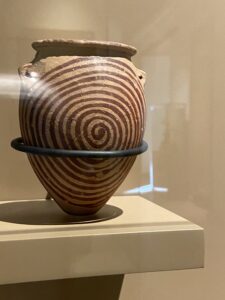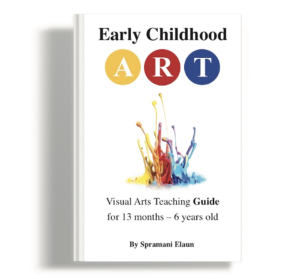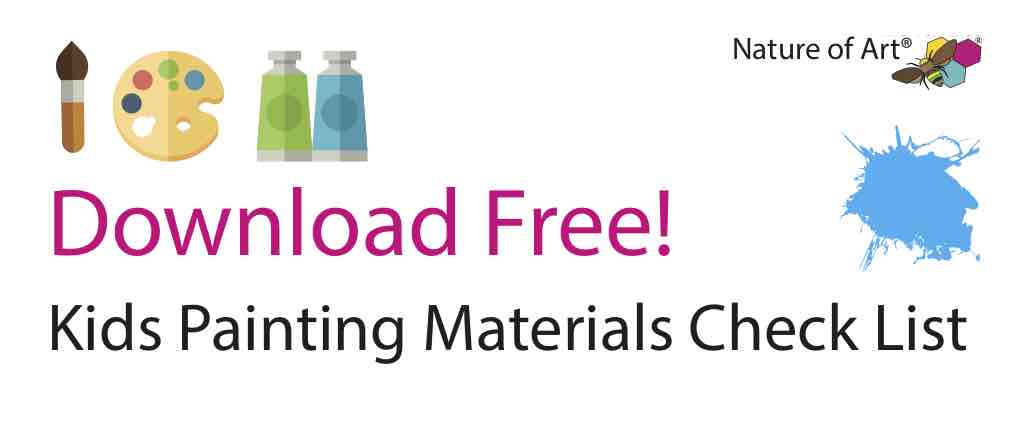Introducing kids to the wonders of the natural world through art can be truly magical. Especially when using dyes and inks derived from organic paints. The process of creating organic paints fosters a deep connection to nature. In this blog post I want to share educational how to and fun ideas to make orgnic paints for kids!
Paint History Lesson
When I first introduce the concept of how to make natural ink, paint, or dye to students. I like to start by connecting the Coming of Humans Great Lesson: On Sep. 12, 1940, the entrance to the Lascaux Cave (Montignac, France) was discovered.
The now-famous cave is covered in more than 600 Palaeolithic cave paintings! These images are primarily of large animals, which were once native to the region. They are estimated to be up to 20,000 years old! Of course, there weren’t any art stores around then. So these ancient artists had to create their own pigment in order to create these works of art.
Natural pigments have been used since prehistoric times. The earliest record dating all the way back to 45,500 years ago! Studying the types of pigments these cave artists used can be a great history art lesson. Let your students experiment with natural pigments on their own! The oldest painting recorded is of three wild pigs deep in the Sulawesi limestone caves in Indonesia.

This lesson leads students into learning how organic pigments can be derived from living and non-living materials. The truth is, all color drives from organic matter and that’s exciting to discover when you’re a kid! Over time, the pigmenting process evolved—we went from processing pigments by hand to commercially manufacturing synthetic pigments. We now have the luxury of choosing from an infinite number pigmented color swatches of so many different mediums! Teaching kids how to make natural paint, ink, or dye can be a rewarding history lesson.
Organic Pigments
One of the activities to this lesson has to do with identifying pigments. But before you can ask your students to find pigments in nature, you have to teach them what a pigment actually is.
Pigments are either mineral or plant based. Mineral materials are from rocks or clay, and plant-based materials are leaves, flowers, fruits, and vegetables.
Pigment is truly color from nature, extracted from animals, plant tissue, or minerals. It’s natural colors from the natural world!
- Organic paints can be extracted from:
- Red beets
- Purple wild berries
- Green spinach
- Yellow turmeric
- Brown coffee grounds
Explore the artistic possibilities of these natural ingredients!

https://montessori-art.com/how-to-make-paint-inks-dyes-from-nature-montessori-activities/The Difference in Natural Paints
The difference between colored mediums like ink, paint, and dye comes down to the binders. Binders can come from plants, animal fat, or man-made synthetic material. A binder is the glue that holds the pigmented color together to lay on a surface.
Each medium is combined with specific binders
- Inks are usually water-based and combined with water.
- Dyes are usually combined with a mordant to help stain clothes.
- Paints are combined with a thick binder so it’s able to adhere to a surface like wood or canvas, and may or may not be washable.
For example, tempera paint can be comb with egg yolks. Dyes can be combine with mordants to stain clothes without washing out. And inks can be combine with water or safe water-soluble solutions so that they absorb into paper.
A binder can also help a pigment be solid and opaque (not letting light through) or light and translucent (where light can be seen through it). For this simple introduction I recommend you use a safe water-based binder to teach these principles.
Ink, Paint, Dye
There many activities your students can do with natural inks, paints, and dyes.
Identify Paint Sources
Start the conversation by asking students where our ancestors might have found pigments without art stores around. Once they collectively come up with ideas, head outdoors for observation.
Observe Natural Pigments in Nature
Before teaching students how to make natural dye, paint, or ink, you want them to understand where the natural materials that make the pigment come from. Take your students on a nature walk around your schoolyard, backyard, vegetable garden, or food market. To observe color in living and nonliving matter and look for natural colors and materials that may be able to create pigment.
Have them hunt for color sources they may be able to use to make their own pigments. This creates an important connection between nature, science, history, and art. Approaching art through the lens of the natural world is an essential educational lesson and opportunity kids love!
Discuss the Importance of Natural Pigments
Over the past twenty years working with thousands of kids doing arts and crafts, l’ve seen incredible lessons unfold. The common link is when children work with natural materials, it almost always leads to deep levels of thought and discussions. These conversations then create awareness about sustainability and current environmental issues.
Read About the Colors of Nature
Sometimes, I’ll help students find inspiration by reading them books; a beautiful new book I’m currently loving is The Color of Nature by Pat Murphy and Paul Doherty.
How kids organic paint examples
You can create a lovely shelf display showing the relationship between natural materials (like fruit, vegetables, minerals) and pigments. Another idea is to use the same material, but display it in its natural state, its processed state, and as the finished pigmented medium along with a painted/drawn example (as shown in the photo below).
Make Natural Organic Paint From Dyes & Ink
One of simplest ways to teach kids how to make paint, dye, or ink is by creating the pigments from fruits, plants, and locally-sourced colorful foods. Store bought items can also be use to teach these lessons.
Try making your own natural inks, dyes, and paints using one of these methods.Make ink with beets – blend beets in a blender with water, strain out the flesh, and add drop of vinegar (natural ink ideas here)
Make natural organic paint from beets or kale veggies – blend your chosen veggie in a blender with water, strain out the flesh, add cornstarch if you want a thicker medium (full recipe here)
Make ink from tea – boil water and pour over loose-leaf tea, allow tea to steep, strain out tea leaves, add cornstarch (or gum arabic) to thicken (watch dye fabric with tea video here)
Check out my Kids Painting Book:



All rights reserved © 2025, Nature of Art®

No part of this blog may be used or be reproduced in any manner whatsoever including reproducing, publishing, performing, and making any adaptions of the work – including translation into another foreign language without written permission except in the case of brief quotations embodied in critical articles and reviews. Nature of Art® Publishing P.O. Box 443 Solana Beach, California 92075.

